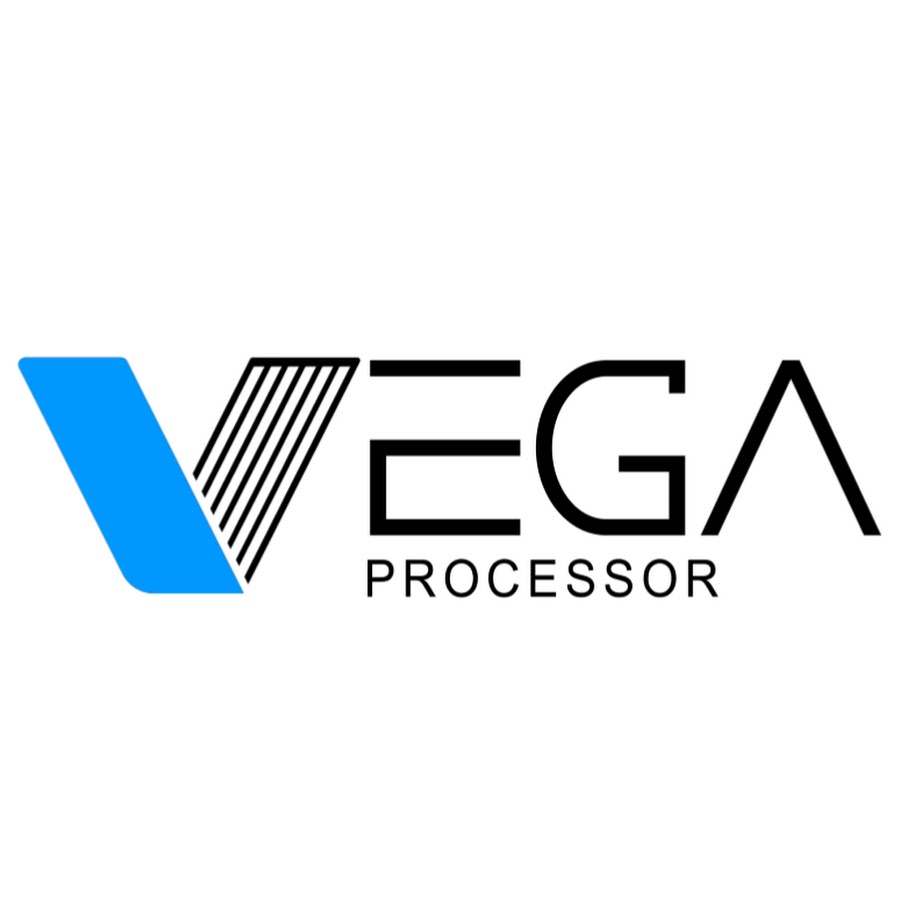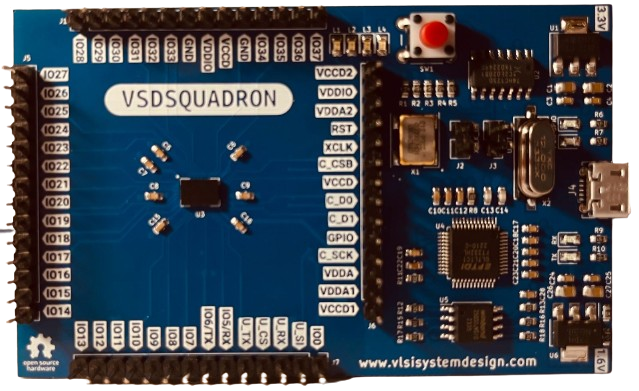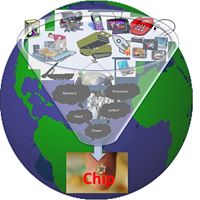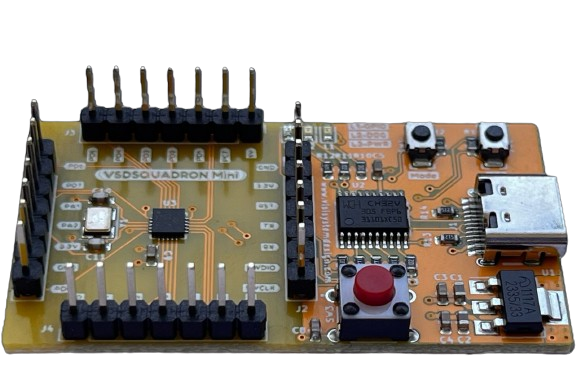A DIR-V initiative
RISC-V Based Product Development Hackathon
Long Term Purpose of Product-Based Hackathon
Product-based hackathon with the RISC-V architecture is not just an event; it’s a stepping stone towards a future where innovation, openness, and collaboration redefine what’s possible in technology. Imagine a realm where every line of code contributes to the building blocks of an ecosystem driven by the principles of transparency and inclusivity. This hackathon isn’t merely a competition; it’s a collective endeavor to push the boundaries of computing, to democratize access to technology, and to foster a generation of solutions that are as diverse as the community that builds them.
By focusing on RISC-V, we embrace an architecture that offers the freedom to design, to innovate, and to tailor technology without the constraints of proprietary systems. It’s a commitment to building products that are not only powerful and efficient but also accessible and modifiable by anyone, anywhere. This long-term purpose goes beyond the immediate outcomes of any single product; it’s about laying the groundwork for a future where technology is more inclusive, more sustainable, and more aligned with the needs of humanity.
History of DIR-V
History of DIR-V
Berkeley RISC & Stanford MIPS
1983 RISC-2 (Blue)
"Outperformed minicomputers"
1988 SPUR(4)
"Multi- processor workstation"
1995 To
"Convergence between
artificial intelligence (AI)
and Microelectronics"
"Short, three-
month project
over the summer"
Foundation
Founding Members:
Andes Antmicro,
CEVA. Codasip, Cortus,
Esperanto, Espressif, ETH Zurich, Google,
IBM, ICT, IIT Madras, Lattice, lowRISC,
Microchip, MIT (Csail), Qualcomm, Rambus,
Rumble, SiFive, Syntacore and Technolution
SHAKTI Processor

VEGA Processor

VSDSquadron
"RISC-V & VLSI
Educational
Board"
How to achieve long term purpose?
Product Building Awareness through Hackathons
To achieve the long-term purpose of building awareness and fostering innovation in product development through hackathons, especially with a focus on the RISC-V architecture, consider the following strategic steps:
Collaborate with Educational Institutions
Partner with universities and colleges to integrate hackathons into their curriculum or as extracurricular activities, ensuring students gain hands-on experience with RISC-V and product development from an early stage.
Engage with the Developer Community
Create a series of pre-hackathon workshops and seminars to educate and excite the developer community about the possibilities that RISC-V offers for product innovation.
Leverage social media and Online Platforms
Utilize social media, forums, and online communities to share success stories, tutorials, and challenges that highlight the versatility and potential of RISC-V in product development.
Provide Access to Resources
Ensure participants have access to RISC-V development kits, tools, and documentation to reduce entry barriers and encourage experimentation and product prototyping.
Foster a Culture of Open Innovation
Encourage sharing of ideas, collaboration across teams, and open-source contributions to build a community that supports continuous learning and innovation.
Highlight Real-World Applications
Demonstrate how RISC-V is used in real-world products and solutions to inspire hackathon participants with tangible examples of what they can achieve.
Offer Mentorship and Support
Connect participants with mentors from industry and academia who can provide guidance, feedback, and support, helping to translate hackathon projects into viable products.
By focusing on education, community engagement, resource accessibility, and a culture of open innovation, hackathons can become powerful catalysts for awareness and product development within the RISC-V ecosystem.
Objective of Current Hackathon
The objective of the current hackathon is to harness the collective creativity and technical skills of participants to revolutionize the toy industry, particularly focusing on educational and IoT-based toys. By utilizing the power of the indigenous “VSDSquadron Mini” and “Vega” RISC-V boards, participants are challenged to create toys that are not only innovative but also functional, affordable, and ready for the market. The emphasis is on developing sensor-based toys that can offer educational value to children and incorporate the Internet of Things (IoT) for enhanced interactivity and learning experiences.
Key objectives include:
- Innovation in Toy Design : Encouraging the creation of unique toys that stimulate learning and interaction through the smart integration of technology.
- Utilization of RISC-V Technology : Leveraging the capabilities of "VSDSquadron Mini" and "Vega" boards to build products with indigenous technology at their core.
- Focus on Sensor-based and IoT Applications : Creating toys that use sensors and IoT to provide engaging and educational experiences for children.
- Simplicity for the End-User : Ensuring that the toys developed are easy for children to use and understand, removing any complexity in the interface or interaction.
- Recognition of Innovation : Rewarding the top 10 innovative designs that stand out in terms of creativity, practicality, and potential impact on the market.
- Market Launch Collaboration: Collaborating with DIR-V and its partners to bring the top three products to market, showcasing the practical applications of hackathon innovations.
This hackathon aims to push the boundaries of what’s possible in educational and IoT-based toys, transforming ideas into tangible products that enrich the learning experiences of children worldwide.
Timeline (Agenda)
Commencing in April, we will open registrations for participants across the nation, inviting budding innovators and technologists to partake in this developmental journey.
An introductory webinar will be held to explain the hackathon process, engaging participants with the goals and expectations of the event.
Participants will submit their product ideas and proposals in a structured format, fostering a professional approach to product development.
The simulation of product code on VSDSquadron firmware will challenge participants to translate ideas into practical, executable plans.
This phase requires teams to submit a comprehensive BOM, ensuring their product concepts are grounded in real-world application.
Highlighting the best innovations, we will announce the top 10 teams, providing them with recognition and a platform to further their aspirations.
Selected teams will be invited to Bangalore for intensive testing of their prototypes, simulating real-world market conditions.
The final event will showcase working prototypes, with the top three innovations being awarded and recognized.
Who Can Participate?

Lorem ipsum dolor sit amet, consectetur adipiscing elit. Ut elit tellus, luctus nec ullamcorper mattis, pulvinar dapibus leo.

Lorem ipsum dolor sit amet, consectetur adipiscing elit. Ut elit tellus, luctus nec ullamcorper mattis, pulvinar dapibus leo.
Why Participate?

Lorem ipsum dolor sit amet, consectetur adipiscing elit. Ut elit tellus, luctus nec ullamcorper mattis, pulvinar dapibus leo.

Lorem ipsum dolor sit amet, consectetur adipiscing elit. Ut elit tellus, luctus nec ullamcorper mattis, pulvinar dapibus leo.

Lorem ipsum dolor sit amet, consectetur adipiscing elit. Ut elit tellus, luctus nec ullamcorper mattis, pulvinar dapibus leo.

Lorem ipsum dolor sit amet, consectetur adipiscing elit. Ut elit tellus, luctus nec ullamcorper mattis, pulvinar dapibus leo.
Problem Statement

Problem A
Lorem ipsum dolor sit amet, consectetur adipiscing elit. Ut elit tellus, luctus nec ullamcorper mattis, pulvinar dapibus leo.

Problem B
Lorem ipsum dolor sit amet, consectetur adipiscing elit. Ut elit tellus, luctus nec ullamcorper mattis, pulvinar dapibus leo.
Prerequisite
- Lorem ipsum dolor sit amet, consectetur adipiscing elit. Ut elit tellus, luctus nec ullamcorper mattis, pulvinar dapibus leo.
- Lorem ipsum dolor sit amet, consectetur adipiscing elit. Ut elit tellus, luctus nec ullamcorper mattis, pulvinar dapibus leo.
- Lorem ipsum dolor sit amet, consectetur adipiscing elit. Ut elit tellus, luctus nec ullamcorper mattis, pulvinar dapibus leo.

Resources
Guidelines
Content Coming Soon..
Rules and regulations
Content Coming Soon..
Boards



